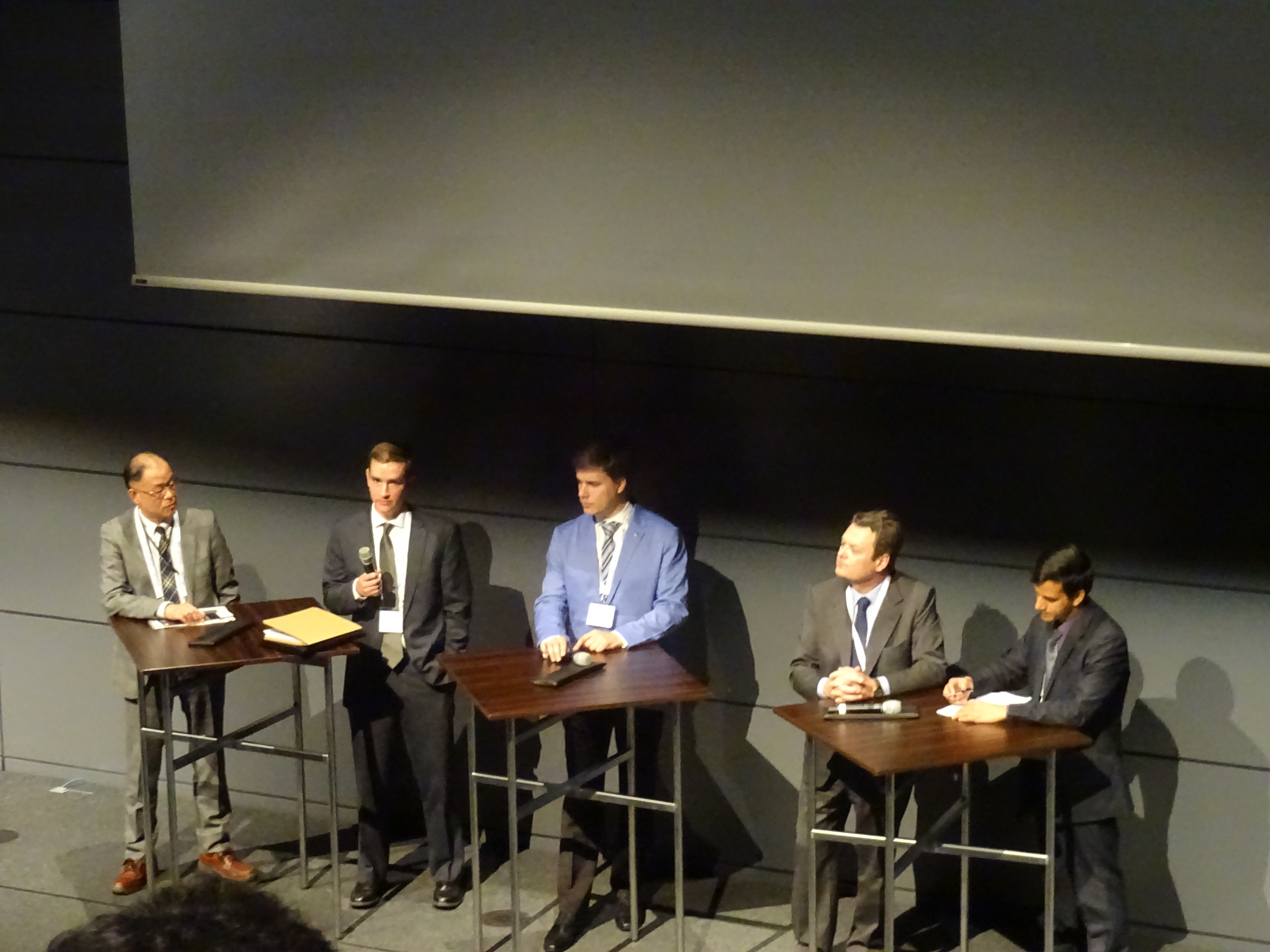GSA Executive Director Carlo des Dorides provides an update on the status of E-GNSS at the 2017 European Navigation Conference (ENC) in Lausanne, Switzerland, on 10 May.
European GNSS Agency (GSA) Executive Director Carlo des Dorides provided ENC 2017 attendees with a status update on both Galileo and EGNOS. Speaking as part of an expert panel on multi-constellation operation and services, des Dorides noted that the number of Galileo-compatible receivers had increased significantly since 2010, and that all the major world players were now implementing Galileo-compatible solutions. “We are starting to see remarkable results with the first new smartphones, which account for the largest GNSS market share. These results bear testimony to how much Galileo has achieved,” he said.
ENC 2017 attendees with a status update on both Galileo and EGNOS. Speaking as part of an expert panel on multi-constellation operation and services, des Dorides noted that the number of Galileo-compatible receivers had increased significantly since 2010, and that all the major world players were now implementing Galileo-compatible solutions. “We are starting to see remarkable results with the first new smartphones, which account for the largest GNSS market share. These results bear testimony to how much Galileo has achieved,” he said.
To keep users up-to-date with detailed information on all available Galileo-compatible products, the GSA has launched www.useGalileo.eu. From this dedicated tool available in 24 languages, users can easily browse the list of currently available Galileo-enabled products and devices and search for devices based on user segment.
Read this: Use Galileo today!
Des Dorides said that 2016 was a milestone year for Galileo, with the Declaration of Galileo Initial Services in December, adding that over the next two years work will be conducted to gradually ramp up and complete the system. “We are expecting to have four more satellites launched this year and to have the complete constellation of 30 satellites fully deployed by 2020,” he said. Des Dorides stressed that the results from the past few years were very encouraging and that performance parameters, such as ranging accuracy and UTC time dissemination accuracy, have been excellent.
Building trust in GNSS
Asked about innovations or designs that improve the trustworthiness of GNSS systems, des Dorides highlighted a three-fold approach comprising of a multi-constellation system, double frequencies and authentication. “From the E-GNSS perspective, we believe in the multi-constellation concept, which means more satellites and better availability and accuracy,” he said.
Read this: The shift towards a multi-constellation environment
Furthermore, the introduction of a second frequency will also improve accuracy as it allows better ionospheric correction and improves the reliability of positioning, velocity and timing (PVT) data. “Adding two frequencies makes the system less vulnerable to jamming and spoofing,” des Dorides said. Finally, he noted that Galileo will provide authentication across a range of services – open, commercial and public regulated (PRS) – adding that the combination of these three elements will increase the trustworthiness of the system.
Imtiaz Ali Khan, from the Indian Space Research Organisation, also highlighted the benefits that a second frequency brings. The Indian Regional Navigation Satellite System (IRNSS) uses multiple frequencies, which, according to Khan, reduces the risk of intentional or unintentional interference. “This is underpinned by a failure message alert system that allows users to switch to an alternate system in the event of failure,” he said.
Read this: Dual Frequency: The Next Mass Market Revolution for GNSS?
GLONASS delegate Igor Silvestrov, from the VNIIFTRI research institute in the Russian Federation, stressed the need for cooperation with receiver manufacturers. According to him, Russian receiver manufacturers are closely involved in discussions about what properties new GLONASS signals need to have to allow users to receive additional information. “The new Interface Control Documents (ICDs) were developed in close cooperation with the receiver manufacturers,” he said.
Lieutenant David Besson from the US Airforce GPS Directorate talked about the ongoing work being done to improve the trustworthiness of GNSS in the US. He noted that the US Federal Aviation Authority (FAA) was very involved in Advanced Receiver Autonomous Integrity Monitoring (ARAIM), which is essentially an algorithm that allows an aircraft to assess whether it can trust the GPS signals it receives. “ARAIM is the way of the future, a way to get more information to the receiver about the integrity of the information it is receiving,” he said, adding that the technology could also be used in other areas of application, such as autonomous cars.
Media note: This feature can be republished without charge provided the European GNSS Agency (GSA) is acknowledged as the source at the top or the bottom of the story. You must request permission before you use any of the photographs on the site. If you republish, we would be grateful if you could link back to the GSA website (http://www.gsa.europa.eu).